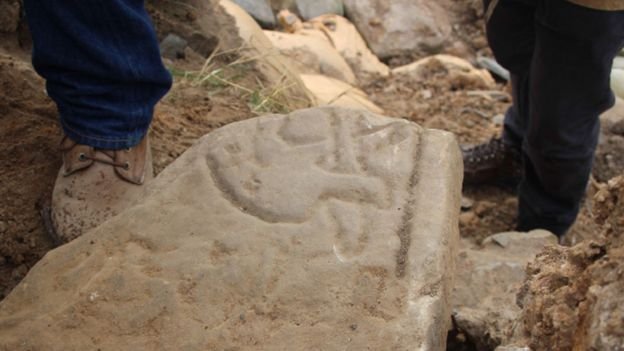Enigmatic Stones Of The Picts: Orkney’s Unique Stone With Dragon-Like Creature And Cross Carving
Ellen Lloyd - AncientPages.com - Carved stones represent a unique legacy of the Picts.
Many of them give evidence of the advanced skills of artists; some of the stones with very complex decorative motifs depict Christian crosses and crescents or birds or animals, both real and mythical.
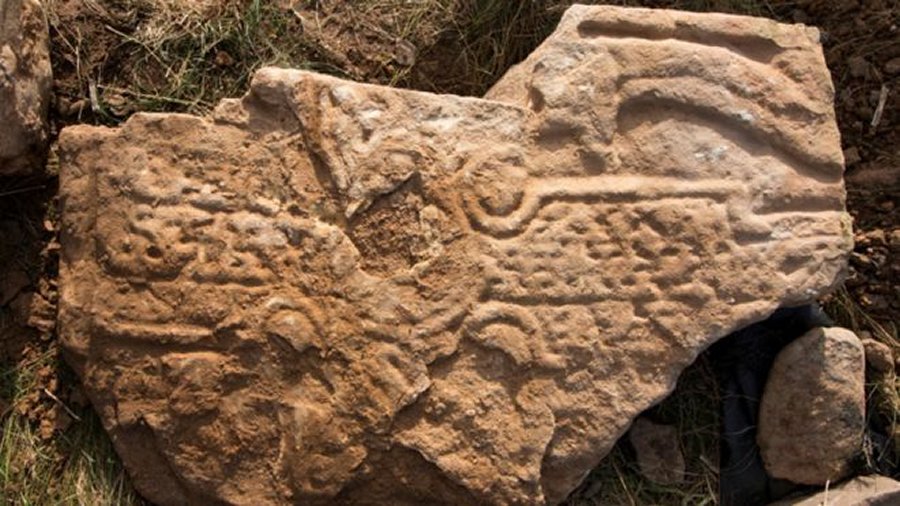 This Pictish Cross Slab - estimated to be about 1,300-year-old - was found after a storm. Image credit: Dr Hugo Anderson-Whymark - Image source
This Pictish Cross Slab - estimated to be about 1,300-year-old - was found after a storm. Image credit: Dr Hugo Anderson-Whymark - Image source
Generally, Pictish stones are carved (or incised) with symbols and different designs. They have been located north of the Clyde-Forth line and on the Eastern side of Scotland. The Pictish stones are undoubtedly historical evidence of the Picts' presence in this part of the country. Dated from the 6th to 9th century, a period during which the Picts became Christianized.
Approximately 350 objects categorized as Pictish stones have survived and have long fascinated scholars.
Image credit: UHI Archaeology Institute
In Orkney, the Picts carved the salmon, bull, deer, and birds, including the eagle and goose. There are also several other designs, such as the infamous Pictish Beast, other monsters-like figures, and "V-rod," "double disc and Z-rod," "mirror and comb," and "triple disc," of which meaning is unknown.
Many theories have tried to explain the Pictish symbols. Why were these enigmatic stones erected, and what was their significance?
Were they markers or perhaps commemoration stones related to people and events?
Several hundred carved Pictish stones have been found mainly in northern and eastern Scotland. Not long ago, another unique Pictish stone depicting a dragon-like creature and a cross carving was discovered after a storm in Orkney, Scotland.
Known as a Pictish cross-slab, it is only the third stone of this type to be found on the islands.
The stone is estimated to be about 1,300-year-old and has an intricately carved cross flanked by the dragon, or beast, and on the reverse side, there is another Pictish beast design staring out from the stone face, with beak open grasping what could be the remains of a staff.
Researchers say that carved Pictish cross-slabs are rare across Scotland, with only two being discovered in Orkney. Therefore, it is a significant find that can shed more light on a period in history when Orkney society began to embrace Christianity.
Some examples of the Pictish Stones:
Left: Front of Woodwrae stone, from Woodwrae, Angus, now on display at Museum of Scotland. Image credit: Catfish Jim and the soapdish - CC BY-SA 3.0; Middle: Hilton of Cadboll Stone (replica); Class II. Image uploader: Deacon of Pndapetzim - CC BY-SA 2.5; Right: Eagle Stone; Class I - Eagle Stone. Clach an Tiompain in Gaelic, this is a Class 1 incised stone, with a horseshoe symbol above an eagle. Image uploader: Anne Burgess - CC BY-SA 2.0
No detailed records of Pictish history survived. The mystery of the carved Pictish stones cannot be entirely explained. The stones were believed to be set up to record Pictish lineages and alliances, but no one knows how this intriguing Pictish system functioned.
Foster, Sally M. writes in 'Picts, Gaels and Scots': "The Picts would definitely not hold the same place in the hearts of the world if their unique symbols did not exist. Found in much of Pictland, and almost exclusively there, they comprise a range of diverse motifs that were placed on sculpted stones, cave walls, everyday objects and splendid jewellery.
Their precise meaning eludes us, although interpretations abound. But their distinct nature should not obscure the fact that they are but part of the Pictish artistic repertoire and that in most other respects the material culture of the Picts was little different from that of their neighbours, with whom they shared much in common.
In fact, the study of the ornament used in these symbols can contribute to placing Pictish art and society in a wider, more familiar context. Nonetheless, there remain overall many aspects of their art that make the Picts stand out from their European neighbours." 1
Written by - Ellen Lloyd – AncientPages.com
Updated on December 20, 2022
Copyright © AncientPages.com All rights reserved. This material may not be published, broadcast, rewritten or redistributed in whole or part without the express written permission of AncientPages.com
Expand for referencesFoster, Sally M. 'Picts, Gaels and Scots
More From Ancient Pages
-
 Sam Bass Became Texas’s Beloved Bandit And Was Admired By The Poor
Featured Stories | Mar 23, 2021
Sam Bass Became Texas’s Beloved Bandit And Was Admired By The Poor
Featured Stories | Mar 23, 2021 -
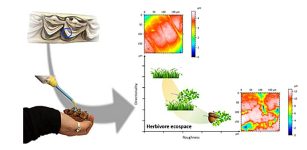 In The Neanderthal Site Of Combe-Grenal, France: Hunting Strategies Were Unaffected By Changing Climate
Archaeology | Jan 19, 2023
In The Neanderthal Site Of Combe-Grenal, France: Hunting Strategies Were Unaffected By Changing Climate
Archaeology | Jan 19, 2023 -
 CT Scan Reveals Repairs And Damage Of 1,300-Year-Old Three-Headed And Six-Armed Statue
Archaeology | Feb 23, 2017
CT Scan Reveals Repairs And Damage Of 1,300-Year-Old Three-Headed And Six-Armed Statue
Archaeology | Feb 23, 2017 -
 On This Day In History: Sorley MacLean, A World Renowned Gaelic Poet, Died – On Nov 24, 1996
News | Nov 24, 2016
On This Day In History: Sorley MacLean, A World Renowned Gaelic Poet, Died – On Nov 24, 1996
News | Nov 24, 2016 -
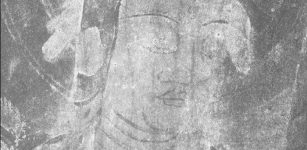 1,300-Year-Old Paintings Depicting Eight Buddhist Saints Revealed By Infrared Cameras
News | Oct 1, 2020
1,300-Year-Old Paintings Depicting Eight Buddhist Saints Revealed By Infrared Cameras
News | Oct 1, 2020 -
 DNA Study Sheds Light On The Mysterious Picts Of Scotland
DNA | Jul 7, 2023
DNA Study Sheds Light On The Mysterious Picts Of Scotland
DNA | Jul 7, 2023 -
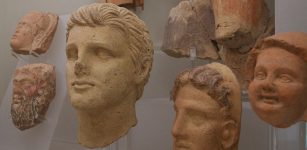 Intriguing Phenomenon Sheds New Light On The Etruscans
Archaeology | Sep 25, 2021
Intriguing Phenomenon Sheds New Light On The Etruscans
Archaeology | Sep 25, 2021 -
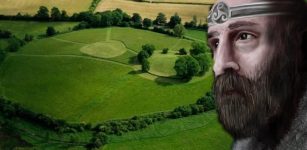 Enigmatic Underground Iron Age Monument At Navan Fort And Its Connection To The Ulster Kings Investigated
Archaeology | Aug 24, 2023
Enigmatic Underground Iron Age Monument At Navan Fort And Its Connection To The Ulster Kings Investigated
Archaeology | Aug 24, 2023 -
 Controversial Artifact Fuente Magna Could Re-Write Ancient History – America’s Mysterious Rosetta Stone
Artifacts | Oct 18, 2014
Controversial Artifact Fuente Magna Could Re-Write Ancient History – America’s Mysterious Rosetta Stone
Artifacts | Oct 18, 2014 -
 Brokkr And Eitri – Norse Dwarves Who Fashioned Magical Artifacts For The Gods
Featured Stories | Aug 19, 2019
Brokkr And Eitri – Norse Dwarves Who Fashioned Magical Artifacts For The Gods
Featured Stories | Aug 19, 2019 -
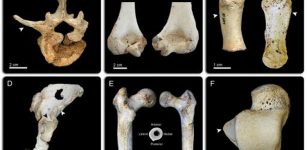 Human Body Has Gone Through Four Stages Of Evolution – New Study
Human Beginnings | Sep 1, 2015
Human Body Has Gone Through Four Stages Of Evolution – New Study
Human Beginnings | Sep 1, 2015 -
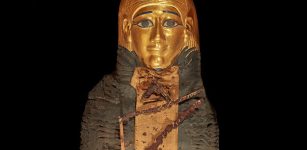 Egyptian ‘Golden Boy’ Mummy Was Protected By 49 Precious Amulets On His Journey To The Afterlife – CT Scans Reveal
Archaeology | Jan 24, 2023
Egyptian ‘Golden Boy’ Mummy Was Protected By 49 Precious Amulets On His Journey To The Afterlife – CT Scans Reveal
Archaeology | Jan 24, 2023 -
 Pharaoh Ay – A Man With A Hidden Agenda Or A Victim Of Unfortunate Circumstances?
Featured Stories | Feb 5, 2019
Pharaoh Ay – A Man With A Hidden Agenda Or A Victim Of Unfortunate Circumstances?
Featured Stories | Feb 5, 2019 -
 Circe: Powerful Divine Sorceress Who Mastered Healing, Miracles And Transforming People Into Animals In Greek Mythology
Featured Stories | Aug 12, 2023
Circe: Powerful Divine Sorceress Who Mastered Healing, Miracles And Transforming People Into Animals In Greek Mythology
Featured Stories | Aug 12, 2023 -
 Curious Giant Shaped Rock In China – An Ancient Man-Made Construction Or Natural Formation?
Featured Stories | Jun 26, 2017
Curious Giant Shaped Rock In China – An Ancient Man-Made Construction Or Natural Formation?
Featured Stories | Jun 26, 2017 -
 Rare Discovery Of More Than 18,000 Inscribed Pot Sherds Document Life In Ancient Egypt
Archaeology | Jan 31, 2022
Rare Discovery Of More Than 18,000 Inscribed Pot Sherds Document Life In Ancient Egypt
Archaeology | Jan 31, 2022 -
 Ancient Mystery Of The American Southwest – Secrets Of The Cliff Dwellers – Part 1
Ancient Mysteries | Jul 23, 2018
Ancient Mystery Of The American Southwest – Secrets Of The Cliff Dwellers – Part 1
Ancient Mysteries | Jul 23, 2018 -
 Amakuni – Legendary Japanese Blacksmith And Father Of The Samurai Sword
Featured Stories | Jan 23, 2019
Amakuni – Legendary Japanese Blacksmith And Father Of The Samurai Sword
Featured Stories | Jan 23, 2019 -
 Viking Women Were More Prominent Than Previously Thought – Archaeological Discoveries Reveal
Archaeology | Sep 6, 2019
Viking Women Were More Prominent Than Previously Thought – Archaeological Discoveries Reveal
Archaeology | Sep 6, 2019 -
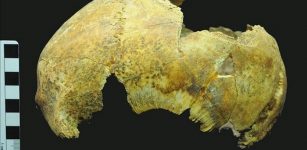 5,000-Year-Old Russian Skull Offers Evidence Of Brain Surgery Made With Stone Scalpel
Archaeology | Oct 23, 2020
5,000-Year-Old Russian Skull Offers Evidence Of Brain Surgery Made With Stone Scalpel
Archaeology | Oct 23, 2020

